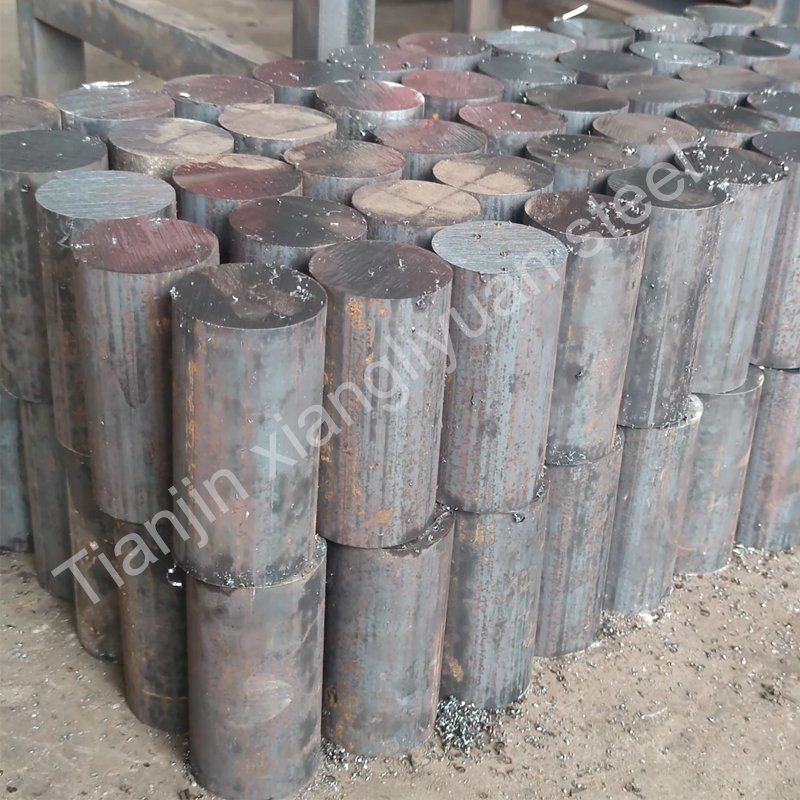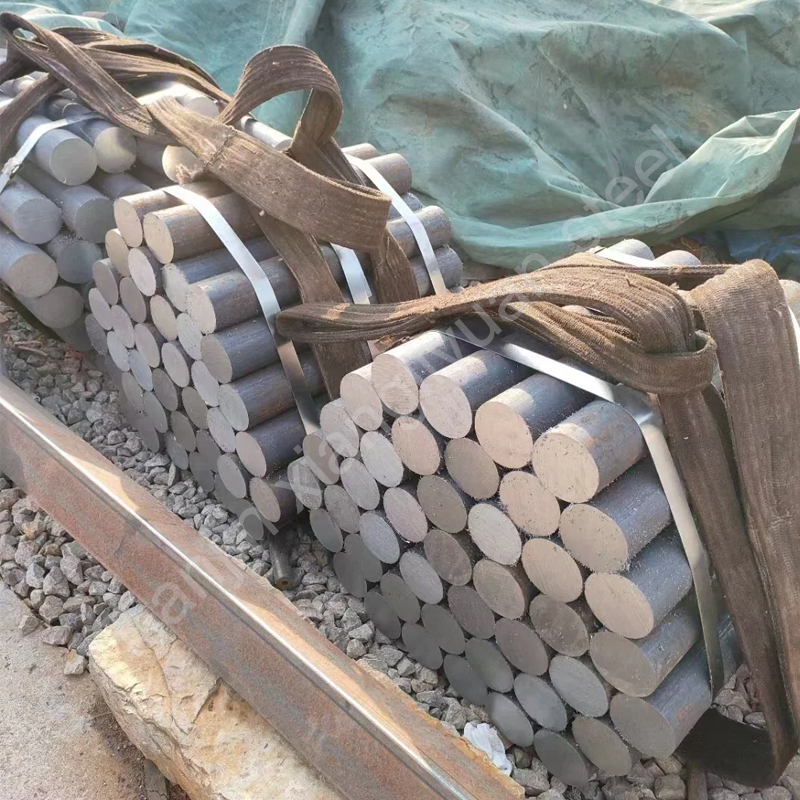As a basic material in the industrial field, round steel bars have become an indispensable raw material in the fields of machinery manufacturing, construction engineering, and the automotive industry with their excellent mechanical properties and wide application scenarios.
1. Material classification and common steel grades
The materials of round steel bars are mainly divided into two categories: carbon steel and alloy steel. Different materials determine their mechanical properties and applicable scenarios.
1. Carbon steel
Carbon steel is mainly composed of iron and carbon. It can be divided into different categories according to the carbon content:
– Low carbon steel (C≤0.25%): such as 20# and Q235 of China’s GB standard, AISI 1018 and ASTM A36 of the United States. It has good plasticity and weldability and is often used in bolts and structural parts.
– Medium carbon steel (C 0.25%~0.6%): such as 45# steel (China), AISI 1045 (USA), and S45C (Japan). It has high strength and is suitable for gear and shaft parts.
– High carbon steel (C ≥ 0.6%): such as T8, T10 (China), AISI 1095 (USA). High hardness but high brittleness, mostly used for knives and springs.
2. Alloy steel
Add Cr, Ni, Mo and other elements to carbon steel to improve performance. Common types include:
– Chromium-molybdenum steel: such as 42CrMo (China), 4140 (USA), high temperature resistance and good toughness, used for oil drilling tools and engine parts.
– Nickel-chromium steel: such as 40CrNiMoA (China), 4340 (USA), high strength and fatigue resistance, suitable for aviation landing gear and heavy machinery.
– Bearing steel: such as GCr15 (China), AISI 52100 (USA), high hardness and wear resistance, used for bearings and precision parts.
2. Comparison of national standards and steel grades
Different countries have formulated production standards for round steel bars. The following is the standard system of major industrial countries:
GB/T (national standard): 45#, 40Cr, Q345
ASTM/AISI: 1045, 4140, A36
JIS: S45C, SCM440, SUJ2
DIN/EN: C45, 42CrMo4, 100Cr6
EN: 1.0503 (C45), 1.7225 (42CrMo4)
3. Production process and classification
Round steel bars can be divided into the following categories according to production methods and uses:
1. According to production process
– Hot-rolled round steel: high temperature rolling forming, with oxide scale on the surface, low cost, suitable for general structural parts.
– Cold-drawn round steel: drawn at room temperature, high dimensional accuracy (tolerance ±0.1mm), smooth surface, used for precision parts.
– Forged round steel: internal defects are eliminated by forging, and the mechanical properties are excellent. It is used for high-strength parts such as crankshafts.
2. Classification by use
– Structural steel: such as Q235, ASTM A36, used for building frames and bridges.
– Tool steel: such as T8, D2 (USA), for manufacturing knives and molds.
– Bearing steel: such as GCr15, dedicated to rolling bearings.
IV. Common specifications and sizes
The specifications of round steel bars are based on diameter (mm) and length (m). The common range is as follows:
– Diameter: small size (Φ5~Φ50mm), medium size (Φ50~Φ200mm), large size (Φ200mm and above).
– Length: usually 3~12 meters, which can be customized according to needs.
Typical application size examples:
– Machining: Φ20~Φ100mm, length 3~6 meters.
– Building structure: Φ12~Φ50mm, used for steel skeleton.
– Heavy machinery: Φ200~Φ500mm, forging and processing large gears.
V. Application fields
1. Construction engineering: Low carbon steel round bars (such as Q235) are used for concrete reinforcement and bolts to support building structures.
2. Machinery manufacturing: Medium carbon steel (45#) and alloy steel (42CrMo) are used to process gears and spindles to increase equipment life.
3. Automobile industry: Alloy steel round bars (such as 40Cr) are used to manufacture crankshafts and connecting rods to withstand high load conditions.
4. Energy field: Chromium-molybdenum steel (such as 4140) is used for oil drill pipes and nuclear power valves, which are resistant to high temperature and high pressure.
As a basic industrial material, the performance optimization and standardized production of round steel bars continue to promote the development of the industry. In the future, with the growing demand for high-end equipment manufacturing, the application of high-strength alloy steel and customized size round steel will be more extensive, and environmentally friendly processes (such as short-process steelmaking) will also become an important direction of production.



